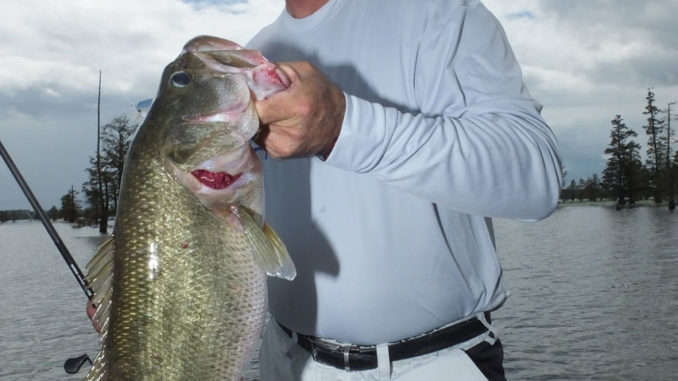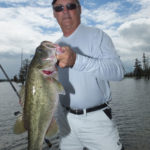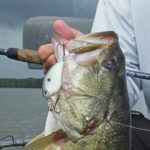
December largemouths will gang up on shad
Bass fishing success on Lake Marion and Lake Moultrie is always about the chow; it’s the one thing that’s predictable about largemouth bass.
Around the holiday season, when we’re thinking about our own feasts at the dinner table, the same is true with largemouth bass. From late November and right through December, if you’re bass fishing at Santee Cooper, it’s all about the shad.
Brett Mitchell from Florence is a highly successful tournament angler, part-time guide on Santee Cooper and a member of the pro staff for Aiken’s ALX Rods. He said December can produce some of the heaviest catches of the entire year when anglers find the area bass are frequenting.
“Without a doubt, some of my heaviest catches of the year have come during the winter pattern,” Mitchell said. “Multiple huge fish can be caught quickly. But when you’re looking to feast in the bass fishing world, you bring the dreaded famine word into play.”
Mitchell said with a good game plan and the right tools for late-season bass fishing, anglers can hedge the odds a good bit in their favor.
“During many times of the year at Santee Cooper, bass will be feeding on various forms of forage, and to a certain extent, that can be true in December,” he said. “But I think by far, the most- dependable pattern — and certainly the one with the most feast-potential — is shad. For most of the bass, particularly big bass, it’s all about the shad this time of year.”
Mitchell said when the water temperature nosedives with the typical November and December weather, shad get into pods and move to specific, small areas.
“December is a pure, winter fishing pattern for me,” Mitchell said. “Typical of winter fishing, bass are usually grouped together, and when you find one, odds are great several more are nearby. They may bite in rapid-fire succession, or it maybe a slower bite, but when I catch one, I focus on that specific target for a while.”
Mitchell said his favorite technique is to fish crankbaits and target areas from 5 to 12 feet deep.
“I think it’s crucial to have a definite depth change to find the tight schools of largemouth in December,” Mitchell said. “I typically don’t fish deeper than 12 feet this time of year. Bass are typically looking up to feed when on a shad pattern, and retrieving lures just above their depth will often trigger a bite more than going too deep.”
“The shad color patterns obviously dominate my color preference this time of the year,” he said. “It’s always a key to mimic what bass are naturally feeding on, so I use variations of shad patterns, with a little diversity in colors based on water color and sometimes to simply experiment. Occasionally, small color patterns will make a huge difference.”
Mitchell fishes both lakes and said shad often get in areas such as creek beds, ditches or any areas where even a small amount of current exists, as well as funnel points for shad movement.
A variety of crankbaits will work; some of his preferred are the Little John series and Spro’s Aruku Shad. He will often begin with shallow-running lures, often working the 3- to 5-foot depths before working deeper as he seeks the day’s pattern.
Mitchell is a strong proponent of using the right tackle for the specific lure; he said rods can make a huge difference.
“It’s an often-overlooked advantage and makes a distinct difference in not just how many bass you hook, but how many you land,” he said. “I’ve long been one who tries to get the best rig to maximize efficiency, as well as comfort and pleasure, when fishing. I always have a target when I cast, so a rod providing accuracy is required. I also prefer to cast long distances in this type of fishing and to keep a fish hooked once it bites.
“I worked up what I wanted out of a rod and ALX had developed the 7-foot-5 Speedfury in its Zolo series,” he said. “It’s a medium to medium-light rod specifically designed to give a bit more than the heavy backbone/fast-tip rods.
“If the rod is too stiff, it can rip the treble hooks of the fish’s mouth, and this action also enables me to load up and cast the bait a long distance accurately. Use a rod that affords these qualities, and your catch rate climbs.”
Mitchell said patience and perseverance are keys to success.
“You can put in the time and effort to find a mega-feast of bass, or you can hope to get lucky with random fishing,” he said. “Lucky is fine. Don’t get me wrong; I’ll take being lucky any day. But Lady Luck is not dependable, and on some cold, winter days she’s nowhere to be found. That’s a recipe for the famine day of fishing.”
Mitchell said that when you find that feast hot spot, bass may linger there for a few days.
“Weather and water conditions may cause the shad to move, and the bass will move with them,” he said. “During the stable times, they may stay in the same areas for multiple days. Take advantage of that, because when they move, you have to hunt them or another group down.
“For me, the searching process and finding a big school of heavy fish is all a part of the fun of bass fishing. And the payoff is when you locate them.”
No guarantee of bass fishing success exists anywhere or anytime. During cold weather at Santee Cooper, with bass bunched tight and focused on shad, the risk/reward scenario is at a high level.
Focusing your efforts on specific places, depths and lures will enhance your odds of success. Until the prespawn, when fish begin to disperse into the shallows, this is a solid pattern to use when few bass fishermen are on the lakes.






Be the first to comment